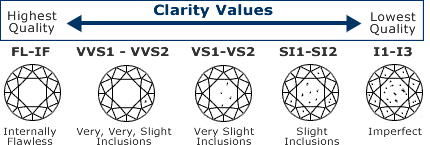Diamonds are one of the world’s most precious natural resources, Diamond are naturally made with an enormous variety of characteristics, making each individual diamond different from another.Lab Created Diamonds are molded in the laboratory under specific conditions.It can be formed through High Pressure Temperature(HPT) or Chemical Vapor Disposition(CVD).The four C’s for diamonds are color,cut,clarity & carat.Lab Grown Diamonds are available in different colours,cuts,clarity and carat.
Buying a diamond might seem like a difficult task especially for the first-time buyer but using established standards to determine should make the process easier. Anyone who is interested in buying a diamond or learning more about diamonds should start with the 4Cs (Cut, Clarity, Carat, and Color). Established by the GIA (Gemological Institute of America), the 4Cs is the global standard used for grading and describing diamonds.

Colour
The Color of diamonds varies from colorless (most rare and precious) to many shades of yellow (less rare). Most diamonds vary in shade from colorless to yellow, brown, or gray. To determine the color grade, all diamonds are compared to an internationally accepted master set of diamonds, the color of which ranges from D, or colorless(most desirable) to Z, (the least desirable).
The color of diamonds, except for fancy color diamonds, are graded based on the absence of color in the diamond. Colorless diamonds are clear and contain no traces of color (e.g. yellow or brown).Diamond color is graded on a scale of D to Z. D, E, and F diamonds are considered the rarest, as they are virtually colorless whereas diamonds in the G and H color range are near colorless Diamonds in the I to J color range offer the best value for money, as they are about 10% cheaper than diamonds in the G to H range but still appear colorless to the naked eye.

CUT
How a diamond has been cut, polished, and to what proportions and symmetry, are very important these factors.If these cutting factors are below standard, the appearance of the diamond will be affected.
There are many different cuts, each having a specific effect on the following three attributes:
Brightness – the amount of light the diamond reflects
Fire – the various colors of the spectrum that a diamond gives off
Scintillation – the sparkle and brilliance that is produced when a diamond is moved.
(A) When a ray of light touches the surface of a diamond, part of the ray is reflected back. This is external reflection.
(B) The rest of the ray penetrates the stone and is then relfected toward the center of the diamond.This known as refraction.
(C) The ray of light is reflected to the surface, where it is observed as the colors of the spectrum. This is known as dispersion.
(C) The ray of light is reflected to the surface, where it is observed as the colors of the spectrum. This is known as dispersion.
Execution of the design, the precision of the cutting details and the quality of the polish are collectively called the finish.
The quality of a diamond cut is dependent primarily on symmetry and polish, as well as the proportions of the table size, crown angle, and pavilion depth to one another.

Clarity
Most diamonds contain inclusions (imperfections within the diamond).Inclusions that are very visible can affect the way light bounces on individual facets of a diamond and can therefore greatly affect a diamond’s fire, brilliance, and scintillation.
A diamond’s clarity is graded based on the quantity of inclusions and their location in the diamond.
FL (Flawless)
Do not contain any visible inclusions (internal flaws) and blemishes (flaws located on the surface) even under 10x magnification. These diamonds are virtually flawless and are extremely rare and expensive.
IF (Internally Flawless)
IF diamonds have no visible inclusions or blemishes unless viewed under 10x magnification by a trained expert.
VVS1 VVS2 (Very Very Slightly Included)
VVS1 and VVS2 diamonds contain some inclusions and blemishes but they are not visible to the untrained eye. Even under 10x magnification, only a skilled grader is able to spot the inclusions.
VS1 VS2 (Very Slightly Included)
Diamonds of VS1 or VS2 clarity grades contain minor inclusions that are not visible to the naked eye. The inclusions can only be seen under 10x magnification.
SI1 SI2 (Slightly Included)
Diamonds with SI1 clarity contain inclusions that are still invisible to the naked eye and can usually only be observed under 10x magnification. SI2 diamonds, on the other hand, contain inclusions that can be seen by the naked eye upon close inspection.
I1, I2, I3 (Included)
I1 to I3 Diamonds contain very visible inclusions that can be observed by the naked eye. I2 and I3 diamonds usually contain inclusions that can affect a diamond’s overall quality and appearance.
Carat Weight
The weight of a diamond is measured in carats, with one carat equaling 200 milligrams or 1/5 gram.Each carat can be subdivided into 100 ‘points. This allows very precise measurements to the hundredth decimal place. A jeweler may describe the weight of a diamond below one carat by its ‘points’ alone.Similarly, diamond of the same size and carat weight may not hold the same value, because one may have better clarity or color. The cut of a diamond also affects it’s carat weight and value because some diamond cuts hold more volume than others.
